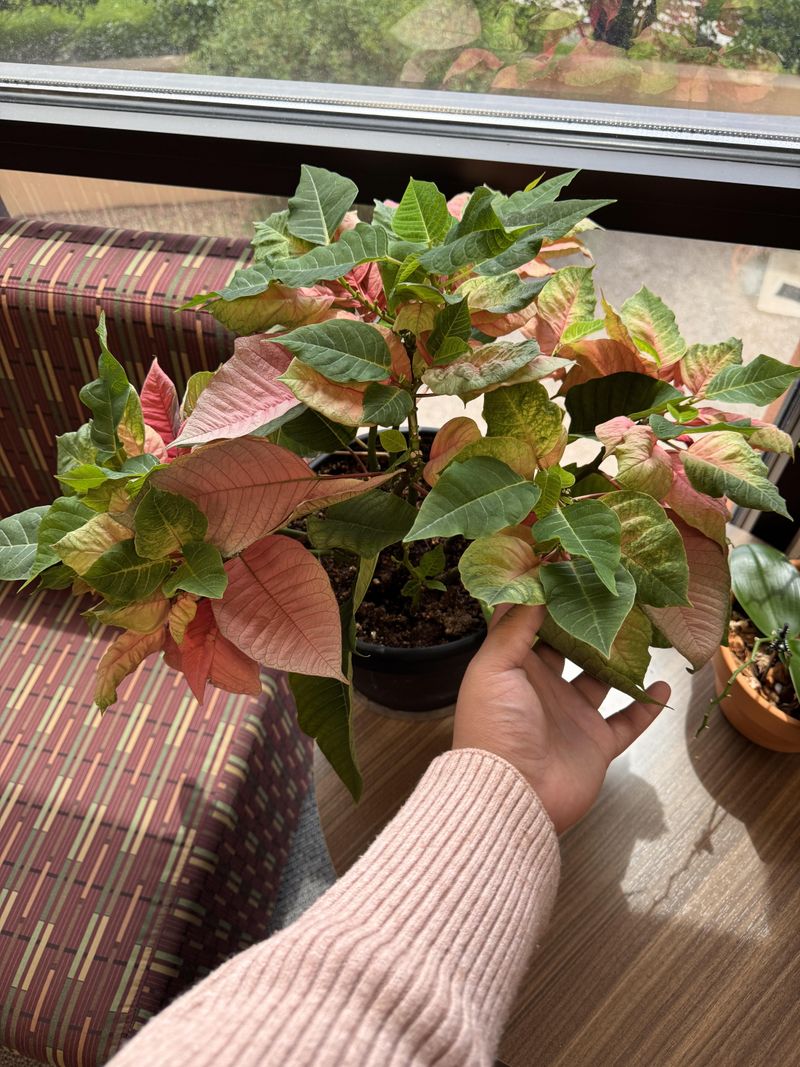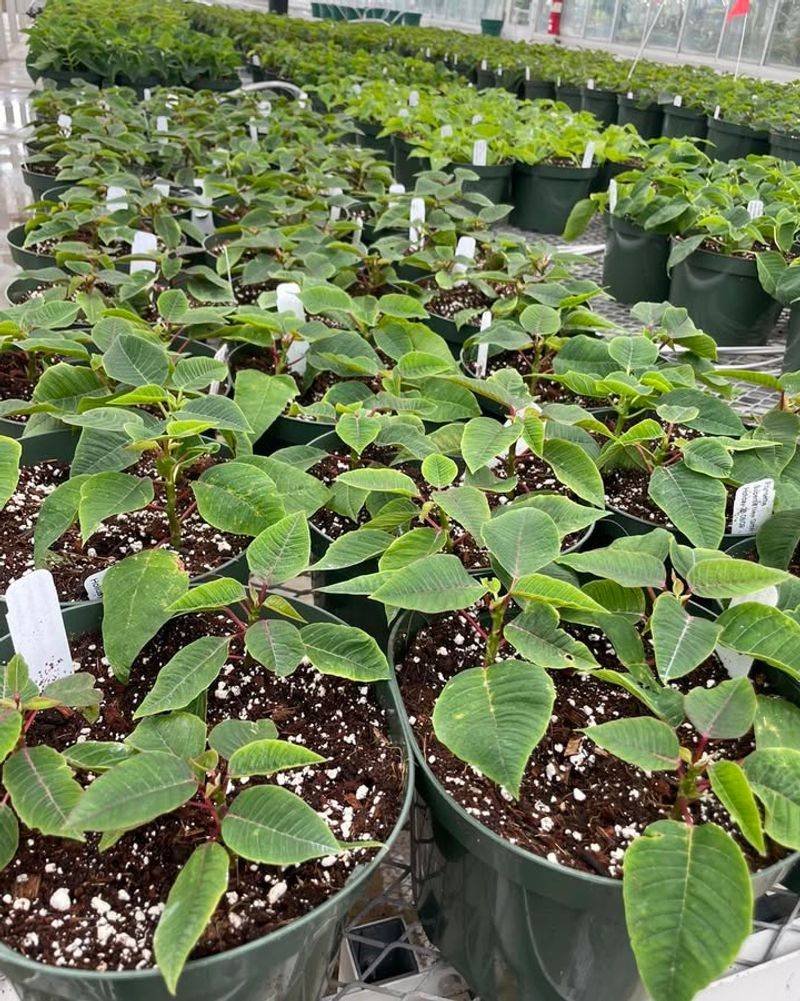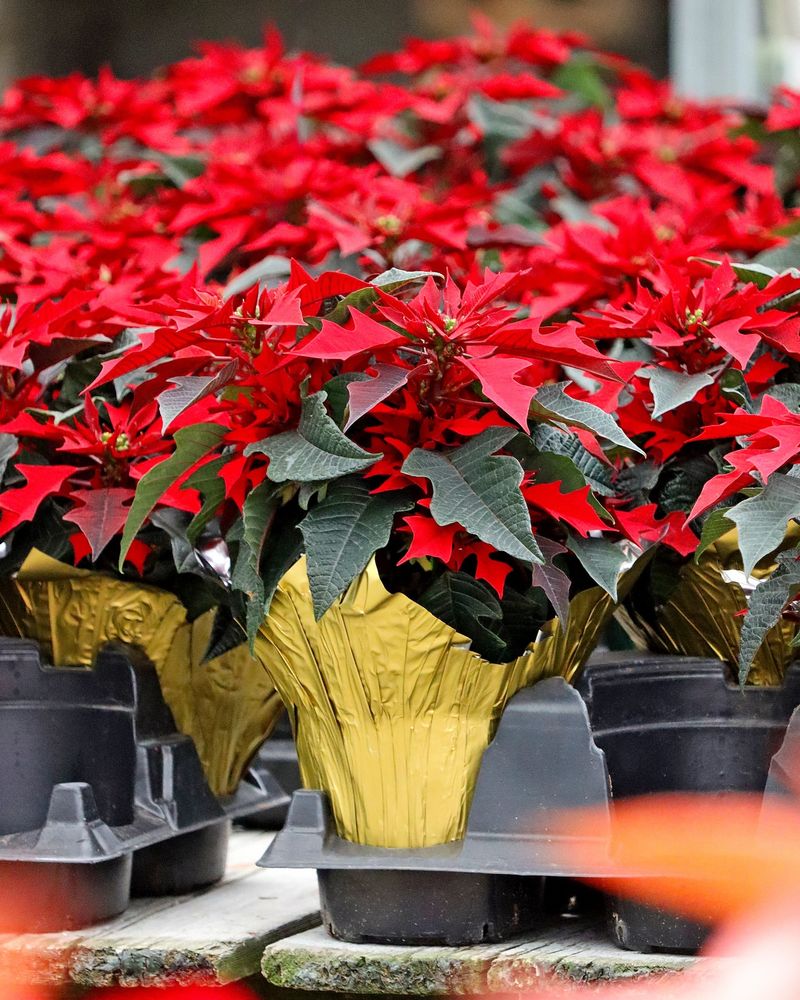When winter settles in across Minnesota, poinsettias bring a welcome burst of color to homes. Before choosing one, though, it pays to take a close look at the plant’s overall health.
A vigorous, well-cared-for poinsettia will stay full and vibrant throughout the holiday season, while a stressed plant may fade or shed leaves soon after you bring it home.
Taking a moment to assess its condition ensures a longer-lasting display and a brighter home all winter.
Yellowing Leaves Signal Poor Care
Yellow leaves tell a story of neglect that you don’t want in your home. When poinsettias don’t receive proper water or nutrients, their lower leaves start turning yellow and eventually fall off.
Minnesota’s dry indoor winter air makes this problem worse once you bring the plant home. A poinsettia with yellow leaves has already been stressed and won’t bounce back easily.
Look for plants with vibrant green foliage from top to bottom, which indicates the grower gave it excellent care throughout its development.
Drooping Stems Mean Water Stress
Stems that bend or sag aren’t just having a bad day—they’re crying out for help. Water stress causes permanent damage to poinsettia stems, making them weak and unable to support the colorful bracts.
Even if you water the plant after bringing it home, those droopy stems rarely recover their strength. Minnesota winters are tough enough without starting with a compromised plant.
Choose poinsettias with firm, upright stems that stand proud and strong, showing they’ve received consistent moisture and proper greenhouse conditions before reaching the store.
Brown Edges Reveal Cold Damage
Brown, crispy edges on leaves scream one thing: cold exposure. Poinsettias are tropical plants that hate temperatures below 50 degrees, and Minnesota’s frigid weather can damage them during transport from truck to store.
Once cold damage occurs, those brown spots spread and ruin the plant’s appearance within weeks. The damaged tissue can’t heal itself, no matter how warm your house stays.
Inspect every leaf carefully, especially if you’re shopping on a particularly cold day when plants might have been exposed during delivery or restocking.
Missing Cyathia Means Short Lifespan
Those tiny yellow buds in the center—called cyathia—are actually the real flowers of the poinsettia. When they’ve already fallen off or turned brown, the plant is past its prime and won’t last long.
Fresh cyathia look tight, green, and covered with yellow pollen, signaling the plant was recently brought from the greenhouse. Minnesota shoppers who spot plants with intact cyathia get weeks more enjoyment from their purchase.
Avoid plants where the center looks bare or crusty, as they’ve been sitting on shelves too long.
Soggy Soil Breeds Root Rot
Stick your finger into the soil before buying—it should feel slightly moist, not soaking wet. Overwatered poinsettias develop root rot, a dangerous fungal disease that destroys the plant from the bottom up.
Store workers sometimes overwater plants to avoid complaints about dry soil, but this creates bigger problems. Root rot symptoms don’t show immediately, so you might not notice until after you’ve brought the plant home and it suddenly collapses.
Choose plants with soil that feels evenly moist but not muddy or swampy to the touch.
Pest Infestations Spread Quickly
Flip the leaves over and check for tiny bugs hiding underneath—whiteflies and aphids love poinsettias. These pests might seem harmless at first, but they multiply rapidly and can infest your other houseplants within days.
Minnesota’s heated homes create the perfect environment for pest populations to explode during winter. Getting rid of an infestation requires chemical treatments or throwing the plant away entirely, neither of which sounds like holiday fun.
Healthy plants have clean leaves with no sticky residue, webbing, or tiny crawling visitors anywhere on the foliage.
Faded Bracts Won’t Regain Color
Bright, saturated color in the bracts—those colorful modified leaves—indicates a fresh, healthy poinsettia. When bracts look washed out or pale, the plant has been stressed by poor light, incorrect temperatures, or age.
Unlike flowers that fade naturally, poinsettia bracts should maintain their vivid color for months under proper conditions. Faded bracts won’t magically brighten up once you get them home, no matter how well you care for the plant.
Select poinsettias with deep, rich colors that make you stop and stare from across the garden center aisle.
Loose Soil Indicates Recent Repotting
Give the plant a gentle wiggle at the base—it should feel secure and stable in its pot. Plants that move around easily might have been recently repotted, which stresses them right before the crucial holiday season.
Recently disturbed roots struggle to absorb water properly, leading to leaf drop and wilting. Minnesota buyers want plants that have been growing undisturbed in their containers for several weeks, allowing roots to establish firmly.
Well-rooted poinsettias feel solid when you grasp the stem, indicating they’re ready to thrive in your home environment.









